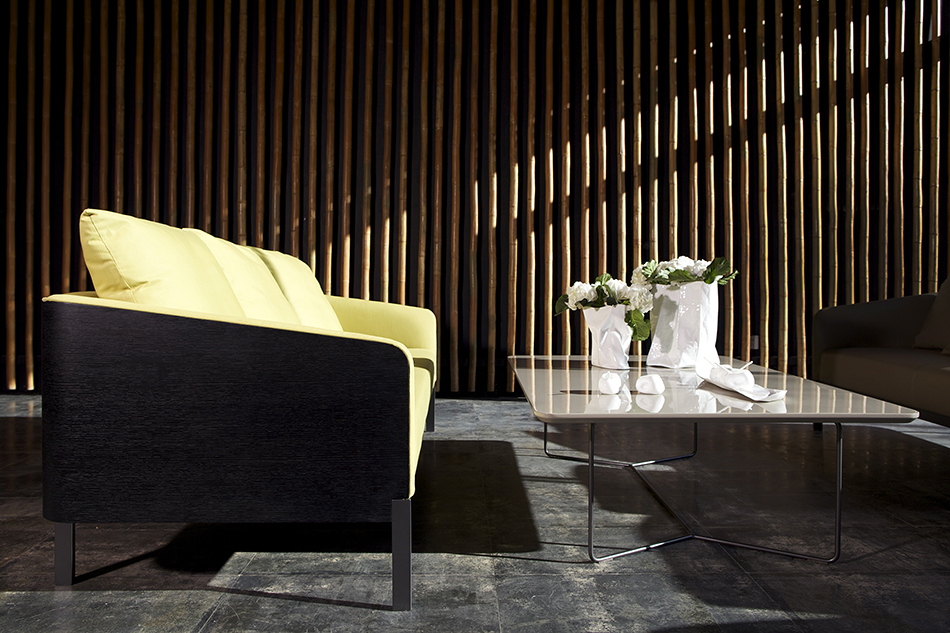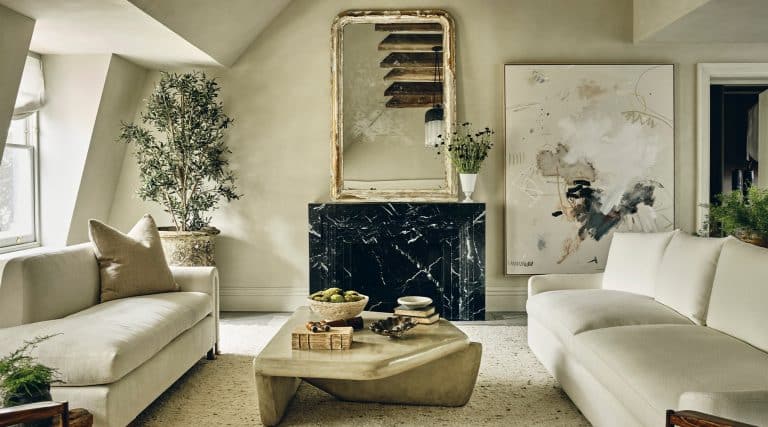
February 20, 2013The Paris-based designer François Champsaur — who specializes in residences, hotels and furniture — employed his signature clean, stylish look on his house in his hometown of Marseilles. All photos courtesy of www.champsaur.com Top: The designer in his Paris studio, located in the Marais district
Eight years ago I visited Paris to write a piece on a fashion consultant’s apartment in a converted convent near the Palais Garnier. What made it such a good story was its size — just 1,000-square-feet for a family of three (the owner had two teenage boys), complete with a living room, dining area, kitchen, study, bathroom and a trio of bedrooms. The interior designer hired to transform this bijou of a space proved to have an alchemic touch, achieving an interior that used ceiling height and light to give the client everything she wanted — a truly elegant solution to the challenges of city living on a small budget. It was such an impressive design that it — and its creator, François Champsaur, a name previously unknown to me — has stuck with me ever since.
Back then, Champsaur operated primarily on his own, from a minuscule studio in the Sixth Arrondissement. Today, his business has burgeoned to a team of 10, which works out of a duplex office in the Marais, where a huge skylight can swing open for an en plein air experience in the heart of the city. The projects he’s undertaken have also grown larger and more prestigious, including a number of high-profile hotel commissions. In 2011, he transformed the 24-room Hotel du Ministère, once a rather dowdy two-star establishment close to the rue du Faubourg Saint-Honoré, into a four-star boutique hotel full of quirky charm; it’s now a welcome alternative to the many lavish international chains that dominate this area. He was also responsible for the extension and total refurbishment of the 48-room Metropolitan hotel — situated close to the Champs Elysées — inaugurated in 2009. In 2010, he undertook a major renovation of the 350-room Sandpiper, a stylish Club Med outpost in Sandpiper Bay, Florida, where he seamlessly blended the resort’s buildings and landscaping in with their natural surroundings.

Two of Champsaur’s designs for the French company Pouenat Ferronnier demonstrate his preference for geometric shapes and working with metal.
Hospitality, however, is only one arm of his practice. Champsaur is the epitome of l’homme universale — a designer as adept at creating elegant lines of furniture and lighting as he is at transforming private residences and large hotels. Born in Marseilles, where he attended the École des Beaux-Arts, he went on to train in interior design at the École Nationale Supérieure des Arts Décoratifs (EnsAD) in Paris, one of the most prestigious universities in France. “It is not a place that turns out people that are all the same,” he says. “It makes you see that to think differently is a benefit. I want to change and progress all the time.”
He qualified as an interior architect in the late 1980s and worked initially for an architectural practice in Paris. In the early ’90s, he joined the Parisian studio of the Italian architect Massimiliano Fuksas, where he stayed for a few months before leaving to pursue a purely interior design-focused path with the studio of the then-relatively unknown Christian Liaigre. He worked for that master of purism as a project director for five years and, in 1996, left to open his own studio.
Today, his design practice has ongoing projects of every scale and type. One of his particular passions is furniture design, and he has collaborated with many French and international companies, including First Time, Treca Interiors and Pouenat Ferronnier, creating strong, angular collections of seating, tables and lamps in luxurious combinations of brushed metal, tinted varnish and high-gloss lacquer. He has also produced linen and carpet collections with brands such as D. Porthault and Toulemonde Bochart.
“You have to make something that is cool, beautiful, different. Something that has soul.”

Only taking on one or two private residential commissions a year, the designer has a gift for making the most out of snug Parisian spaces, as he did in the cool neutral number shown here.
For HC28, a Chinese company based in Beijing, Champsaur has imagined new product ranges inspired by traditional Chinese furnishings, featuring his signature geometric forms and bold lines. As artistic director of the brand, his brief is to provide the country’s burgeoning middle class with the same level of well-designed products for the home that their European and American counterparts have been enjoying since the 1960s. “When I first went to China, I didn’t know a lot about the country — other than the utter perfection of Ming furniture,” says Champsaur. “It was a blank sheet of paper for me, but in a way that made me free. I was able to appropriate Chinese influences without the designs looking obviously Chinese. There is a long history between the Chinese and the French — Shanghai Art Deco, for example — and certainly this is a collaboration that appears to be very successful.”
What Champsaur most enjoys is the diversity of the projects he undertakes these days, saying, “I am not interested in repeating projects I have already designed — that is boring. Too often a client sees something I have created and they want that, too.” Last year, for example, he created Arqana, an equestrian auction hall in Deauville, France, which boasts an interior as sleek and chic as any private residence.
As for actual private residential projects, of late, he undertakes only one or two a year — mainly because it is difficult to find the right type of client. He also admits that sometimes he walks into a prospective client’s home and refuses to do anything at all. “I am not a decorator,” he says. “It might be good as it is. If so, I tell them to clean it up and add some art.”

The designer’s furniture looks at home in a variety of settings, including on his Marseilles patio.
He believes that design, like conceptual or abstract art, should not necessarily be understood all at once. “Sometimes your brain has to navigate a way through a painting,” he explains. “Architecture is the same. You have to make something that is cool, beautiful, different. Something that has soul.”
His own apartment is a short distance from the studio, and he also has a home in Marseille, where he has brought all his inventive and imaginative genius to life. The building may be traditionally simple (what the French would call a “cabanon,” meaning shed), but it contains five rooms all turned towards the outdoors, with the bedroom and bathroom facing the sea. “I wanted to create somewhere that is always simple, always fresh, that catches the light and softens it, where everything engenders rest and the contemplation of the landscape,” he explains.
Now in his mid-40s, Champsaur possesses a zest for life and a determination to produce better and better creations that hasn’t diminished since he designed the flat in Paris that I first visited. Ever a work in progress, he has no overarching theory of design per se. “If I had a philosophy, it would mean I had finished learning — and I have not. I am a better designer than I was ten years ago, and I will be better in another ten. To keep things interesting, you have to put new energy into each project, otherwise you are repeating yourself — and if you do that, there is no progress and no poetry.”








